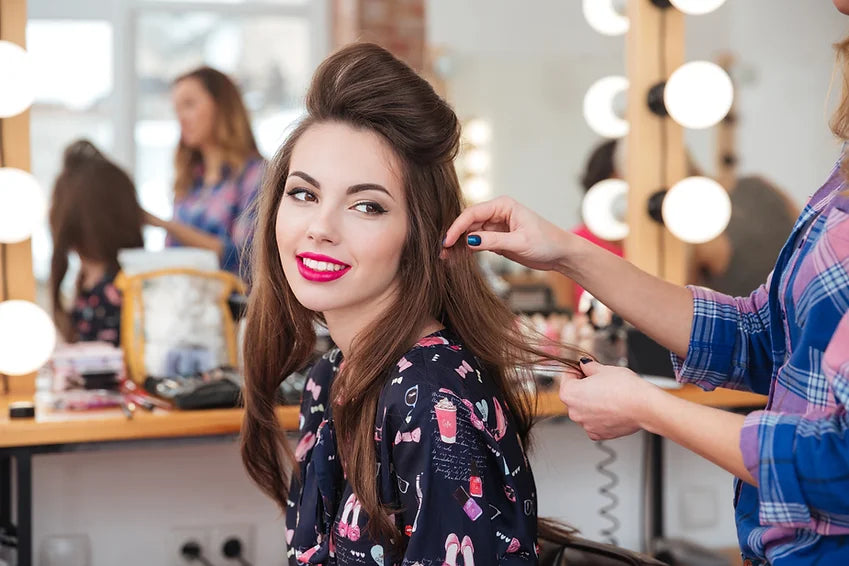Things You Need to Know Before You Open a Salon
Starting any business, be it a start-up or a big venture, is a big deal. And if you want to get it right from the first try, it is better to plan and prepare.
There is a lot to consider before opening a hair salon or any other type of salon . And everything can get very confusing, especially if it's your first time in any kind of business. How to open a beauty salon? Where do you really start? How much does it cost to start a beauty salon? How do you prioritize? It can be difficult to imagine the course of your actions, so we have prepared a list of things to keep in mind when opening a salon.
Setting the location
There are a few factors to check. First, see if region zoning allows you to set up a salon at the desired location. Then consider whether the size of the property and its condition are appropriate and of course the rental price.
But all this will only make sense if the room is located close to the audience you want to reach. Usually, places of great movement of people are very good for this type of commerce, such as shopping areas and malls. One detail that can help a lot is the ease of parking.
Do a market analysis
The beauty market has been growing gradually around the world. Undoubtedly, it is a good business to invest in this sector. Many new things come up and professionals are increasingly specializing. New chemical formulas and treatments are launched to treat the hair. A good tip is to get all the information you can about this market. The success of the salon also depends on the entrepreneur 's ability and talent to retain his clientele, investing in outreach to capture even more customers.

The structure of the salon or aesthetic
We suggest a basic structure with an area of 20 to 30m², for a small hall. Analyze your financial conditions to rent a larger space. The location should be in a well located spot of your city. It also has electrical and plumbing installations, as well as an easy-to-clean floor. The environment needs to pass the impression of cleanliness to become pleasant. Offer a waiting room with coffee, water and magazines to read. Be sure to provide the least comfort to your customers.
Usually salons have 5 main areas:
Reception: where a computer helps in customer service and appointments. In this same place can be the cashier.
Waiting room: A nice place with sofas, coffee tables, magazines and coffee. It can also have surround sound and a TV.
Reception Hall: Should be spacious to accommodate reclining chairs, sinks, mirrors and counters. Good lighting and beautiful decor are key.
Bathrooms: Always spotless and easily accessible to customers.
Small deposit: To store materials and equipment.
Office: If space is available, a small office for administrative purposes can be very useful and facilitates your work away from the service environment.
The basic equipment
Some equipment is indispensable for performing the aesthetic and capillary procedures.
Administrative equipment: Microcomputer and printer, telephones, cabinets and shelves, tax coupon machine, tables and chairs.
Work equipment: Chairs for haircutting, countertops, mirrors, reception desk, support trolleys, manicure table and chair, hair sinks, massage and aesthetic bed, tripod hair dryer and greenhouse.
Customer wellness equipment: Armchairs, magazine rack, jugs and cups, thermos and cups, air conditioning, surround sound and television set.
Work Tools: Dryers, scissors, brushes, combs, basins, pliers, towels and straightening plates.
Disposable items: Aprons, caps, coats and gloves.

Employees
The number of professionals who will work in the salon depends on the type of structure to be assembled. You also need to define whether hairdressers, manicurists and epilators will be commissioned or hired. Make proper training with your employees because they are essential for the proper functioning of the salon. An important tip is to offer a differentiated service. Be creative and innovate to make a difference in the face of competition.
In many salons, the owner also performs some operational function, whether as a hairdresser, makeup artist or any other. It is important to note that if this is your case, you need to set aside much of your time for the administrative, service, and outreach activities of your business.
The minimum staff required to set up a hair salon is:
-
receptionist
-
hairdressers
-
makeup artist and beautician
-
manicure
Depending on the size of the room, these numbers should be enlarged.
Goods and Raw Materials
Although beauty businesses of this type are usually classified as services, you will need a variety of raw materials and merchandise to set up a hair salon.
Even because, you can also sell some products. Not only for salon use, but also to increase your revenue with make-up, props, professional cosmetics and even costume jewelry, hairpins, cell phone cases and other small goods that may be of interest to your audience.
But let's focus our list on what you'll need to do your job the best way, see:

-
Shampoos, conditioners and hair creams.
-
Wax and hair removal cream, waxing paper.
-
Cream for massages.
-
Nail polishes.
-
Makeup products such as mascara, blush, eyeliner, etc.
-
Dyes and bleaches.
-
Exfoliating, moisturizing and other skin creams.




